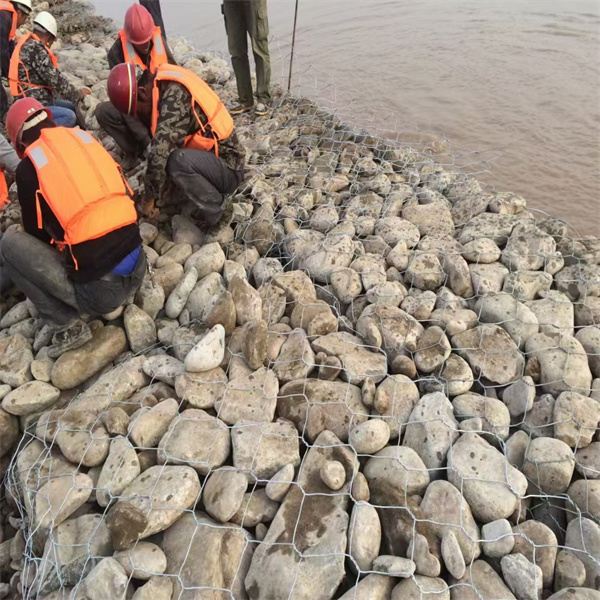دېكابىر . 05, 2024 11:30 Back to list
wholesale gabion rust
Understanding Wholesale Gabion Rust Causes, Prevention, and Solutions
Gabions, traditionally made of wire mesh and filled with stones, have become increasingly popular for various applications, including landscaping, erosion control, and architectural features. However, one significant issue that can affect the durability and appearance of gabions is rust. Understanding the causes of rust, its impact on gabions, and ways to prevent and manage it is crucial for anyone considering wholesale gabion purchases.
What Causes Rust in Gabions?
Rust is primarily the result of oxidation — a chemical reaction that occurs when iron in the wire mesh is exposed to moisture and oxygen over time. Gabions are often located in outdoor environments, where they are subjected to elements such as rain, humidity, and temperature changes. Factors that accelerate rusting include
1. Poor Quality Materials Cheap, low-grade steel used in gabion construction is more susceptible to rust. Using galvanized or PVC-coated wire can significantly reduce the chance of oxidation.
2. Environmental Factors Prolonged exposure to water, especially in salty environments near oceans, can increase the corrosion rate. Furthermore, areas with high humidity or frequent rain are more prone to rust.
3. Mechanical Damage When gabion wires are bent or damaged during installation or with time, protective coatings can become compromised, exposing the bare metal and accelerating rust formation.
Impact of Rust on Gabions
Rust can have several negative effects on gabions
- Structural Integrity Over time, rust can weaken the wire mesh, leading to structural failures. This can result in the collapse of the gabion and potentially pose safety risks, particularly in areas designed for erosion control or weight-bearing applications.
- Aesthetic Concerns Rust can mar the appearance of gabions, turning what is meant to be a decorative element into an eye sore. The reddish-brown color of rust may clash with landscaping designs and reduce property value.
- Increased Maintenance Costs Regular maintenance and replacement of rusted components can lead to increased costs over time, making the initial investment in gabions less cost-effective.
Preventing Rust
wholesale gabion rust

Several strategies can be employed to prevent rust in gabions
1. Use High-Quality Materials Investing in gabions made from galvanized steel or zinc-aluminum alloy can significantly enhance longevity. These materials provide a protective barrier against rust.
2. Regular Maintenance Conducting regular inspections can help identify rust early. If small areas of rust are spotted, they should be treated immediately to prevent further spreading.
3. Coating Options Manufacturers offer additional coatings that can further protect gabion wires. PVC coatings, for example, can provide a robust barrier against moisture and corrosion.
4. Environmentally Conscious Placement Avoid placing gabions in areas with high salt exposure or excessive moisture accumulation. Strategic design and placement can help minimize contact with elements that promote rusting.
Solutions for Rusting Gabions
For existing gabions that have begun to show signs of rust, several remedial actions can be taken
- Rust Removal Using wire brushes or sandblasting methods to remove rust can restore the integrity of gabions. Once rust is removed, a protective coating should be reapplied.
- Reinforcement In some cases, reinforcing the structure with additional materials or redesigning can extend the life of rusted gabions.
- Replacement When the damage is extensive, it may be more cost-effective to replace the affected gabions altogether, particularly in critical areas where structural integrity is paramount.
Conclusion
Understanding wholesale gabion rust and its implications is essential for anyone looking to utilize these structures effectively. With the right materials, regular maintenance, and proactive measures, the risk of rust can be minimized, ensuring that gabions remain a durable and attractive component in landscaping and construction projects.
-
hesco-gabion-baskets-for-coastal-erosion-prevention
NewsAug.22,2025
-
longevity-and-durability-of-river-rock-gabion-walls
NewsAug.22,2025
-
how-to-integrate-gabion-3d-walls-in-urban-planning
NewsAug.22,2025
-
reno-mattress-gabion-applications-in-civil-engineering
NewsAug.22,2025
-
how-to-install-wire-mesh-for-gabion-baskets-properly
NewsAug.22,2025
-
best-materials-for-filling-a-chain-link-gabion
NewsAug.22,2025
-
Wire Mesh Thickness Impact on Gabion Wall Load Bearing
NewsAug.12,2025






